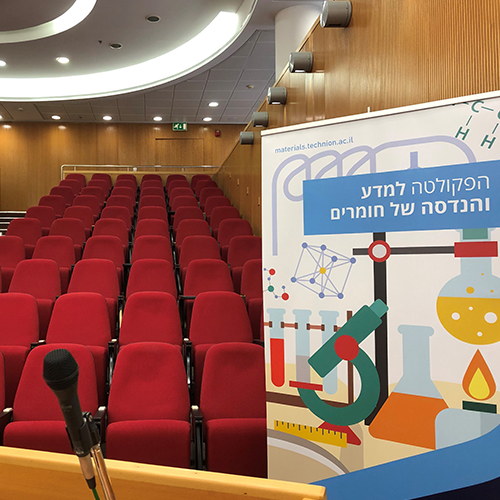
07/01/2026
אודיטוריום ע"ש דויד וואנג, בניין מידן, קומה 3
Mr. Gilad Agam – MSc candidate
Department of Materials Science and Engineering Technion – Israel Institute of Technology, Haifa
Although PbTe has been implemented and investigated for a few decades as the primary candidate for thermoelectric (TE) energy conversion for the mid-temperature range, new aspects related to its microstructure and TE behavior are still being revealed. N-type PbTe performance is still falling behind its p-type counterpart, requiring further study, mainly by thermal conductivity reduction. Recent studies indicate that doping of PbTe with Cu can be beneficial to the TE power conversion efficiency in n-type PbTe by improving the electrical conductivity and impeding the thermal conductivity through changes in the temperature-dependent solubility limit.
In this study we performed DSC scans that enabled us to determine phase transition temperatures. Based on these results, we conducted homogenization and aging heat treatments for self-synthesized hot-pressed PbTe- x mol. %Cu2Te (x=0,1,2,4) samples.
We performed unusual experiments in which specimens of 1 or 2 mol.% Cu2Te, below the solubility limit, were held at constant temperatures for 12 h and their TE transport coefficients were probed at short time intervals. This enabled us to correlate between TE transport coefficients and microstructure evolution. Precipitation of the Cu2Te phase depletes the PbTe-matrix from Cu solute atoms, which act as electron acceptors or donors at low or high concentrations, respectively. No changes were recorded for thermal conductivity over aging time.
Elucidating Cu role as a dopant in PbTe and its effects on TE properties can pave the way to designing high performance PbTe based TE devices.


